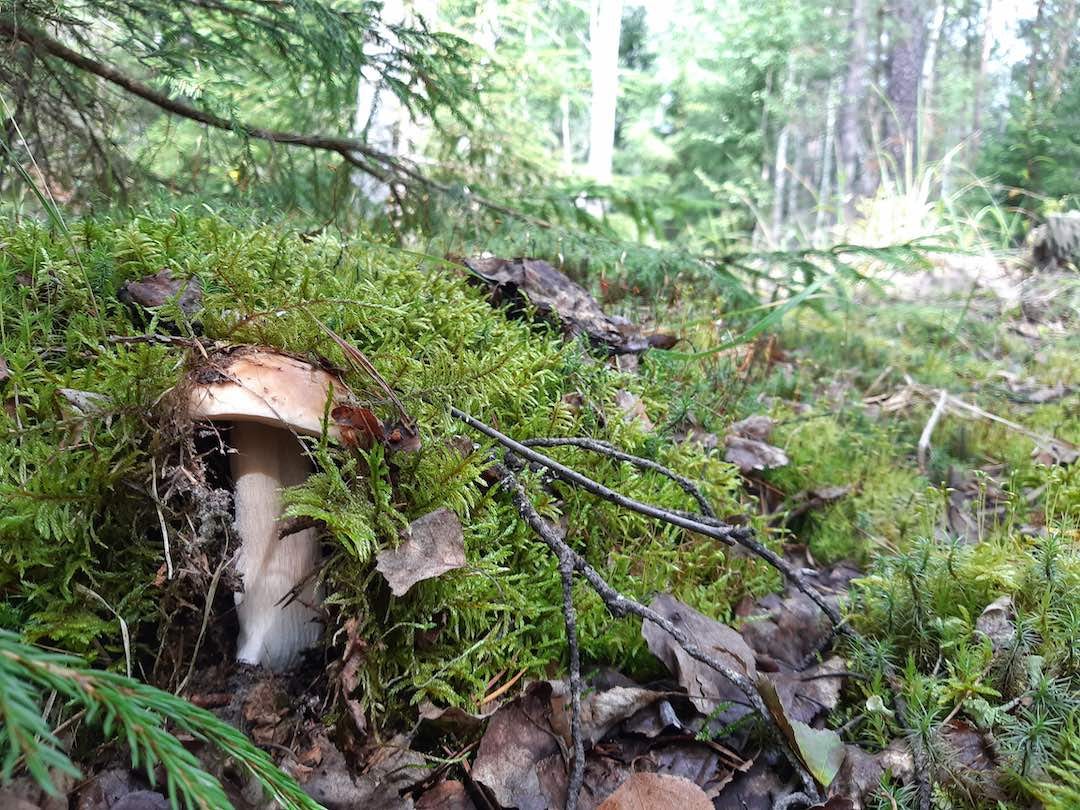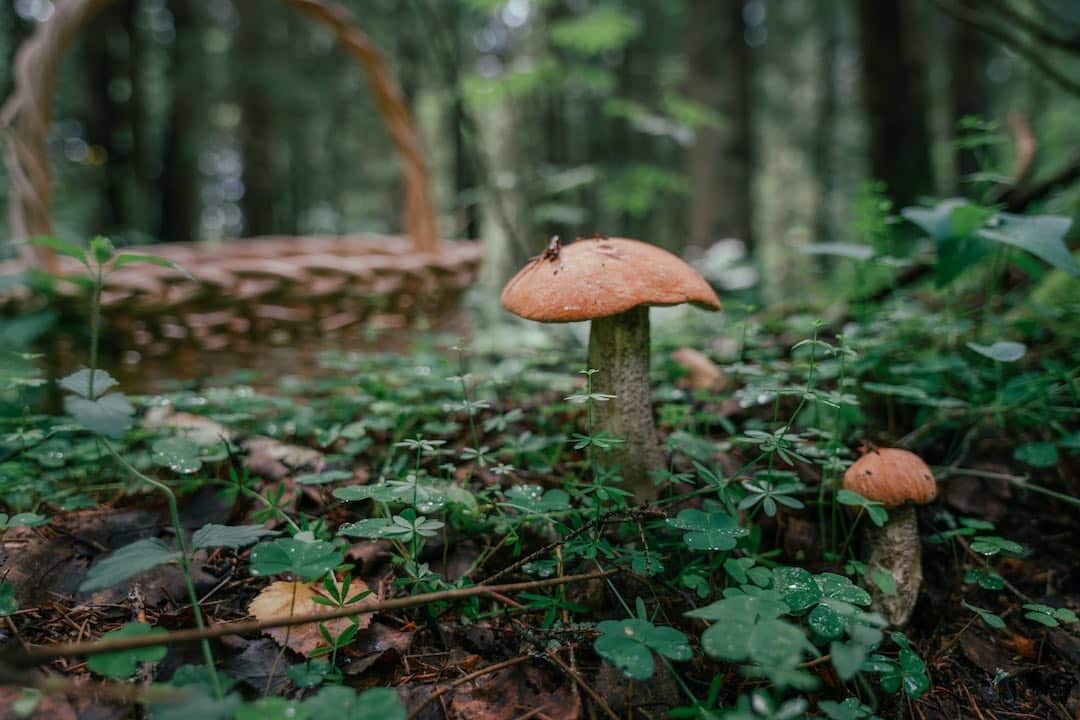Exploring Wild Psilocybin Mushrooms: Identification and Foraging Guide
Now that psychedelics are having a global renaissance, the interest in psilocybin mushrooms is also starting to go up drastically. This has also caused a spike in people seeking out wild psilocybin mushrooms in their areas. Although wild psilocybin mushrooms are relatively common throughout the world - so are the bad toxic mushrooms.
This leads many people to wonder where mushrooms grow, how you can identify them, and avoid toxic mushrooms.
Read on to learn more about the best environments for finding wild psilocybin mushrooms, the best environments for mushroom growth, and how to enhance your knowledge as a mycologist.
Disclaimer: This page is strictly for educational purposes. Please, don't touch or eat any wild mushrooms - especially those that look like psilocybin mushrooms. This could be harmful and even lead to mushroom poisoning. Collecting/consuming psilocybe fungus isn't legal in the USA under the Controlled Substance Act. Always consult with a qualified mycologist before attempting to identify or consume any mushrooms.
Finding the Best Place to Search for Wild Psychedelic Shrooms
Much of the problem in finding wild psilocybin mushrooms is knowing how to differentiate between wild magic mushrooms and those that are potentially toxic. After all, there are about 14,000 different types of mushrooms known to science.
Usually, wild shrooms can be found in tropical or subtropical conditions that have humidity levels of at least 80%. They need nutrient-rich soil and very mild wind. The esteemed Psilocybe cubensis tends to perform best in heavily forested areas with surrounding moss, rotting logs, and other small vegetation. If you see cows in the area, start to look even further - as magic mushrooms love cow dung.
To summarize, look for:
Tropical/subtropical climates
High humidity over 90%
Nutrient-rich soil
Forested areas with moss
Fields where cows are left to graze
It can simply not be said enough that you shouldn’t do this without first checking your local laws. Then, consult with a professional mycologist to ensure that you do things right. The last thing you want to do is harvest the wrong type of mushroom and run into potential problems.
Best Places to Find Wild Mushrooms
United States
Pacific Northwest: Particularly in Northern California, Oregon, and Washington
Central Florida: Alachua and Highlands counties
The Rustbelt: Michigan, Pennsylvania, Ohio, Indiana, and Illinois
Washington State: Pacific County
East and South Texas: DeWitt and Rusk counties
Northeast: Maine, Vermont, New Hampshire, Massachusetts, Rhode Island, and Connecticut
Southeast: Florida (excluding the Keys), Georgia, South Carolina, North Carolina, and Virginia
Midwest: Wisconsin, Minnesota, Iowa, Missouri, Kansas, and Nebraska
Rocky Mountains: Colorado, Montana, Idaho, and Wyoming
Southwest: New Mexico, Arizona, and Utah
International
Canada: British Columbia, Alberta, and Ontario
Mexico: Particularly in the central and southern regions
Central America: Guatemala, Belize, Honduras, and Costa Rica
South America: Colombia, Ecuador, Peru, and Brazil
Europe: United Kingdom, Ireland, Netherlands, Germany, and Spain
Asia: Thailand, Malaysia, and Indonesia
Africa: South Africa, Lesotho, and Swaziland
Australia: Queensland and Tasmania
New Zealand: Nationwide
When Searching For Wild Mushrooms, Look For:
Cattle Pastures: Areas with cow dung provide essential nutrients for mushroom growth.
Tropical Cloud Forests: These humid environments are ideal for various mushroom species.
Grasslands and Fields: Open areas with rich soil support diverse fungi.
Sugar Cane Mulch: This substrate can foster mushroom growth.
Timber Waste and Decaying Logs: Breaking down of organic materials is an ideal living place for various types of fungi.
Before trying to go into any area, you should always try to respect private property laws - and the integrity of the site if you are given access. This way, there will be plenty of later generations of people that can do the same thing!
Where to Find Golden Teacher Shrooms
One of the most popular types of hallucinogenic mushrooms to search for is Golden Teacher mushrooms. These are a unique variant known for shiny gold & red caps - almost resembling an obviously toxic fungi. They are also typically found in tropical climates such as:
Argentina
Belize
Brazil
Colombia
Costa Rica
Cuba
Guatemala
Hawaii
Another key thing to note here is the timing you are hunting. Golden Teachers typically grow in the northern hemisphere between February and December, and between November & April in the southern hemisphere.
Can You Find Penis Envy Shrooms in the Wild?
Penis Envy mushrooms are another popular variant but are less commonly found in the wild. This is because they are not naturally occurring and were actually developed in a lab! They have more weight to them and are generally shorter in height than other types of psilocybin shrooms. They also don’t have the iconic veil between the head and cap that other types of mushrooms have.
Imagine Going on a Hike & Coming Home Ready to Up Your Researching Level
As a mycologist, you are constantly spending time in the lab. In many cases, though, you are just a day trip away from coming home with a great new set of mushroom species to research and dive into. Consider joining local foraging groups to make the most of your hike, and be sure to visit our site for more information.






